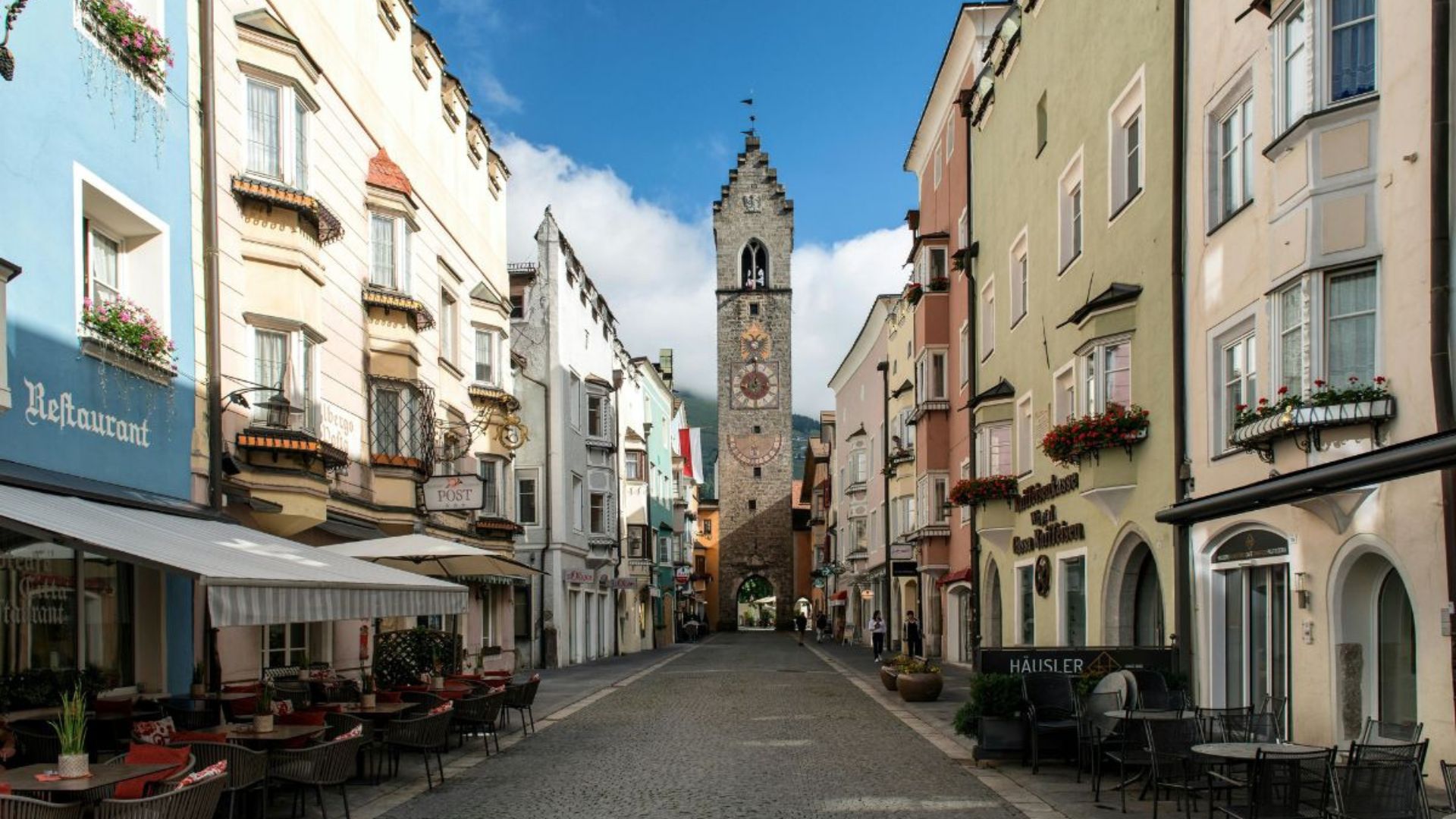Nestled in the heart of the Italian Alps, Vipiteno captured my imagination the moment I stepped onto its medieval main street. Via Città Nuova runs through the heart of this colorful mountain town, where pastel-painted buildings stand in perfect harmony against the dramatic backdrop of snow-capped peaks.
Walking down this picturesque lane feels like stepping into a living fairytale. The quirky shops, inviting cafes, and centuries of Alpine heritage are preserved in every cobblestone.
I found myself mesmerized by the blend of Italian and Austrian influences that give Vipiteno its unique charm. The town sits in Italy’s northernmost region, creating a cultural crossroads that’s evident in everything from the architecture to the local traditions.
During my visit, I discovered that the best way to experience the magic of Via Città Nuova is to slow down and soak in its details. The ornate facades, the flower boxes bursting with color, and the welcoming atmosphere of its family-run establishments.
The locals I met were eager to share stories about seasonal festivities that transform the main street throughout the year. From summer markets showcasing handcrafted treasures to winter celebrations when the buildings glow with warm light against the snow, Vipiteno honors its medieval roots while embracing visitors with open arms. I recommend starting your exploration early in the day when the morning light bathes the colorful buildings in a golden glow.

A Glimpse into Vipiteno’s Past
Vipiteno’s story is written in its medieval stones and colorful facades. This Alpine town carries centuries of history while maintaining its unique character at Italy’s northern edge.
The Historical Significance
Vipiteno, known as Sterzing in German, sits in South Tyrol, where cultures blend beautifully. The town gained importance during the Middle Ages as a crucial mining center and trade route through the Alps.
I was fascinated to learn that the iconic Torre delle Dodici (Tower of Twelve) divides the Old Town from the New Town. Despite its name, the “New” Town dates back to the 15th century!
Walking these streets, I felt the weight of history with every step. The town flourished from silver mining in nearby mountains, bringing wealth that funded many beautiful buildings we see today.
Local guides offer 360° panoramic tours that help visitors understand how Vipiteno evolved from a mining outpost to the charming destination it is now.
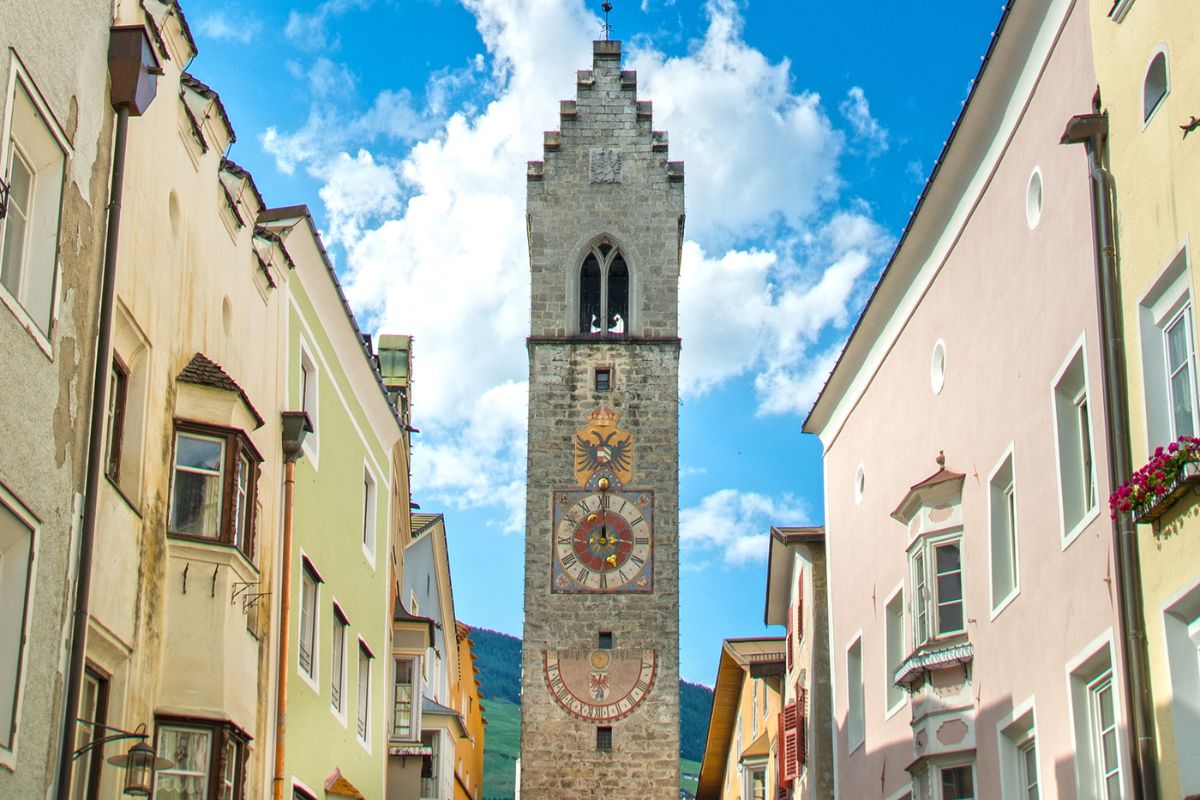
Preserved Architecture
The main street, Via Città Nuova, showcases some of the best-preserved medieval architecture I’ve seen in Northern Italy. Pastel buildings in yellow, pink, and blue create a postcard-perfect scene against the mountain backdrop.
Many structures feature traditional Erker (bay windows) that jut outward, originally designed to help residents watch street activity below. These architectural details make Vipiteno unique.
I recommend watching the orientation videos available at the tourist office before exploring. They highlight hidden details you might miss, like ancient merchant signs and symbolic carvings.
The old mining families’ wealth is evident in elaborate Gothic details on building facades. Even more impressive is how well-maintained these structures remain despite centuries of Alpine weather.
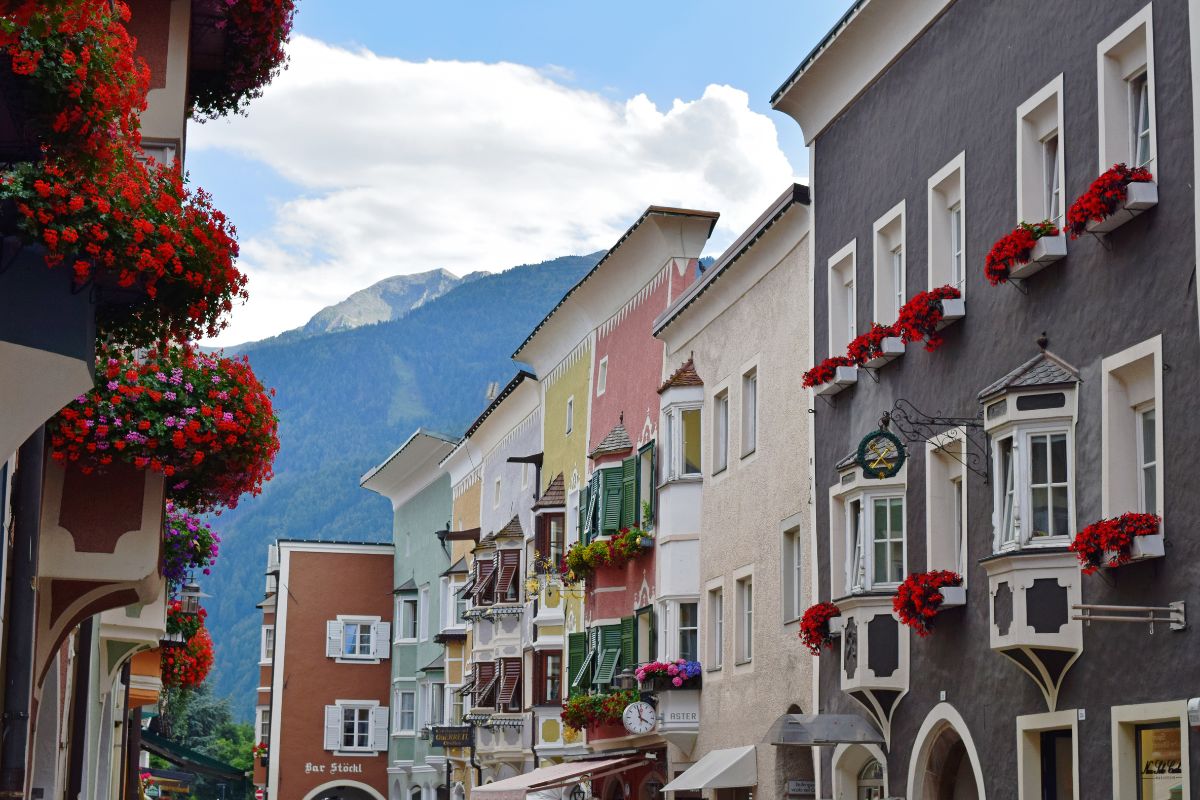
Exploring the Colorful Main Street
Walking down Via Città Nuova, Vipiteno’s main street, feels like stepping into a living storybook. Colorful buildings line both sides, creating a picture-perfect scene against the backdrop of towering Alpine peaks.
Architectural Marvels
The street showcases a stunning blend of medieval and Austrian-influenced architecture. I was immediately drawn to the pastel-colored facades—yellows, pinks, and soft blues—that create a cheerful atmosphere even on cloudy days.
Many buildings feature traditional bay windows and ornate details that tell stories of the town’s rich past.
The 46-meter-high Torre delle Dodici (Tower of the Twelve) stands as the street’s most iconic landmark. Dating back to the 15th century, it divides the old and new sections of town.
What impressed me most were the intricate frescoes adorning several building exteriors. These painted scenes depict local folklore and historical events, giving you a glimpse into Vipiteno’s cultural heritage without setting foot in a museum.

Local Artisan Shops and Cafes
The main street hosts a delightful array of boutiques selling handcrafted treasures. I discovered shops offering traditional Tyrolean clothing, handmade wooden toys, and alpine herbs you won’t find in typical souvenir stores.
The cafes here deserve special mention. Unlike touristy spots in larger cities, Vipiteno’s cafes serve authentic South Tyrolean specialties. I recommend stopping at Café Zentral for their apple strudel—perfectly spiced and served with a dollop of fresh cream.
Several shops specialize in local products:
- Mountain cheese from nearby Alpine farms
- Speck (smoked ham) prepared using traditional methods
- Schüttelbrot (crispy flatbread with caraway seeds)
Don’t miss the family-run gelaterias offering unique flavors like pine and elderflower that capture the essence of the surrounding mountains.

Street Performances and Markets
During the summer months, the main street transforms into a lively entertainment venue. I’ve watched traditional Tyrolean folk dancers perform in colorful costumes, their synchronized movements drawing crowds of delighted spectators.
The weekly farmers market (every Friday morning) brings local producers to the street. Farmers display fresh produce, homemade jams, and honey from mountain bees. This is where you’ll find the most authentic souvenirs and meet locals who are happy to share stories about their craft.
During the Christmas season, the street hosts one of the region’s most charming holiday markets. Wooden stalls sell handcrafted ornaments, mulled wine, and roasted chestnuts. The twinkling lights against the colorful buildings create stock photo-worthy scenes that capture the magical atmosphere.
Street musicians often perform traditional alpine music, adding to the enchanting ambiance that makes Vipiteno’s main street truly unforgettable.
Cultural Heritage and Traditions
Vipiteno’s unique cultural identity shines through its blend of Austrian and Italian influences. This fascinating mix creates a distinctive heritage that locals celebrate through festivals, food, and daily life.
Annual Festivals
Walking through Vipiteno during festival season is like stepping into a living history book. The town comes alive with the Mercatino di Natale (Christmas Market) each December, where wooden stalls fill the main street with handcrafted ornaments and the scent of mulled wine.
Easter celebrations blend Catholic traditions with Alpine customs, including beautifully decorated eggs and special processions along Via Città Nuova.
I was lucky to witness the Yoggiàla harvest festival in autumn, where locals don traditional South Tyrolean costumes and parade through town celebrating the year’s bounty. Brass bands play traditional music while dancers perform centuries-old routines.
The midsummer Sonnenwende (solstice) celebration features mountain bonfires visible from town—a tradition dating back to pre-Christian times.
Everyday Local Life
Daily life in Vipiteno reflects its dual heritage in fascinating ways. Locals often switch effortlessly between Italian and German, sometimes within the same sentence! This linguistic flexibility mirrors the town’s position at a cultural crossroads.
I noticed many shops close during the afternoon riposo (rest time), following the Italian custom, while the punctuality and orderliness reflect Austrian influences.
Food traditions reveal this cultural fusion too. Bakeries sell both Italian focaccia and Austrian strudel side by side. The local specialty speck (smoked ham) appears in both Germanic dishes and Italian pasta.
Many residents maintain traditional crafts, including woodcarving and lace-making, which they’re happy to demonstrate to visitors. I watched fascinating videos of these techniques at the local heritage museum before seeing the artisans at work.
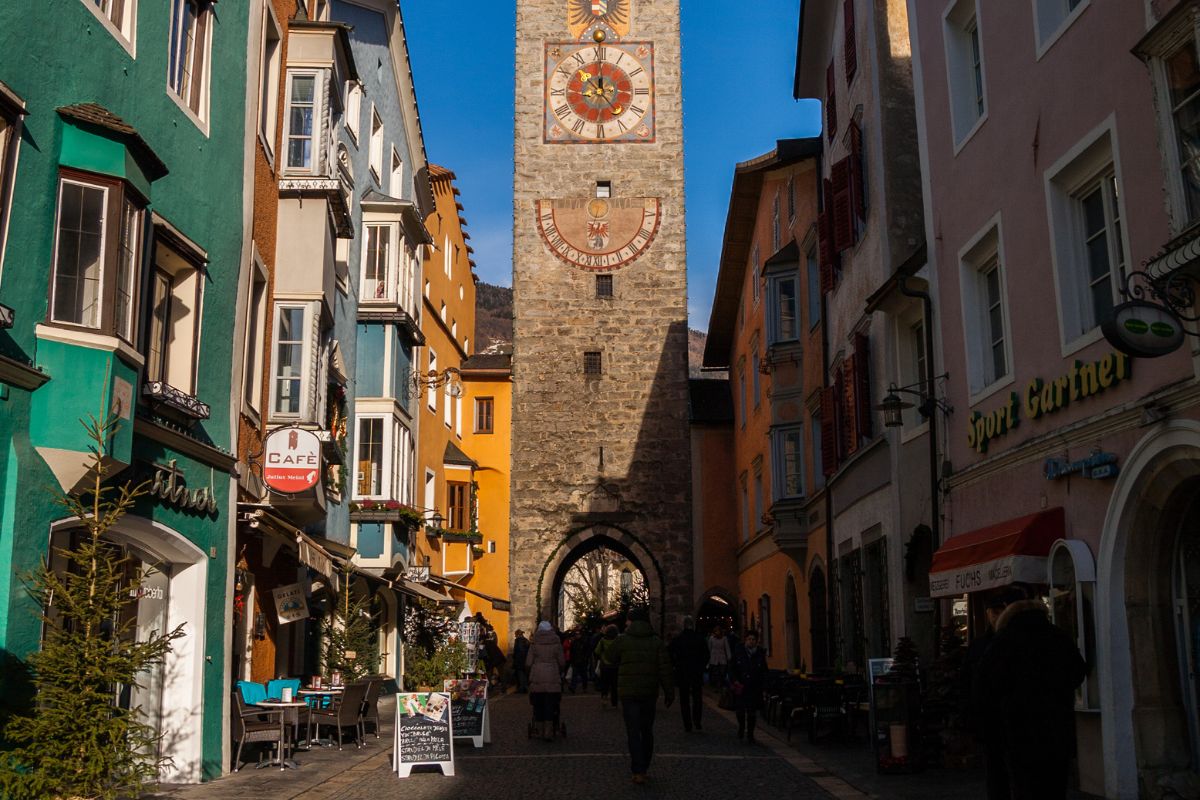
Vipiteno Through the Lens
Capturing Vipiteno’s medieval charm requires both patience and an eye for detail. The town’s colorful buildings and Alpine backdrop create perfect photo opportunities for both amateur and professional photographers.
Photography Tips
When I photograph Vipiteno’s main street, Via Città Nuova, morning light works best as it illuminates the pastel facades. The golden hour just after sunrise creates a magical glow on the colorful buildings that line this medieval lane.
I always recommend using a wide-angle lens to capture the full row of elegant palaces. For detail shots, focus on the ornate elements that make each building unique – window boxes filled with flowers, decorative signs, and historic doorways.
Don’t just take static shots! I’ve found that including local people going about their day adds authenticity to your images. Consider creating a series of photos that tell a story about this charming Alpine town.
For those interested in digital assets, there are several stock photo collections featuring Vipiteno that showcase seasonal variations.
Finding the Best Views
My favorite viewpoint is from the Torre delle Dodici (Tower of the Twelve), where I captured stunning 360° panoramic images of the entire town nestled in the Alps. The elevation gives you a perfect perspective of how the colorful main street forms the heart of Vipiteno.
For street-level photography, I recommend walking to the northern end of Via Città Nuova and shooting south to capture the tower framing the colorful buildings.
Morning visits help avoid crowds, especially during summer months. I’ve gotten my best shots between 7-9 AM when the light is soft and the streets are quieter.
Don’t miss the opportunity to climb slightly into the surrounding hills for landscape shots that show Vipiteno in its Alpine setting. These elevated perspectives show how the town sits perfectly between towering mountains.
Practical Information for Visitors
Planning your trip to Vipiteno requires some insider knowledge to make the most of this charming medieval town. I’ve gathered essential details about where to stay, eat, and how to get around during your visit.
Accommodation Recommendations
I found several lovely places to stay in and around Vipiteno that cater to different preferences and budgets.
Hotel Sterzinger Moos offers comfortable rooms with mountain views and traditional Tyrolean decor. Their breakfast featuring local cheeses and homemade jams is a perfect start to the day.
For a more intimate experience, Pension Margareth provides family-run hospitality with spacious rooms and reasonable rates. I particularly loved their garden terrace.
Budget travelers should check out Jugendherberge Vipiteno, a clean and well-maintained hostel with private and shared rooms. For luxury seekers, Romantik Hotel Stafler combines elegant rooms with a renowned restaurant just outside town.
Most accommodations fill quickly during the summer and winter seasons, so I recommend booking at least 2-3 months in advance.
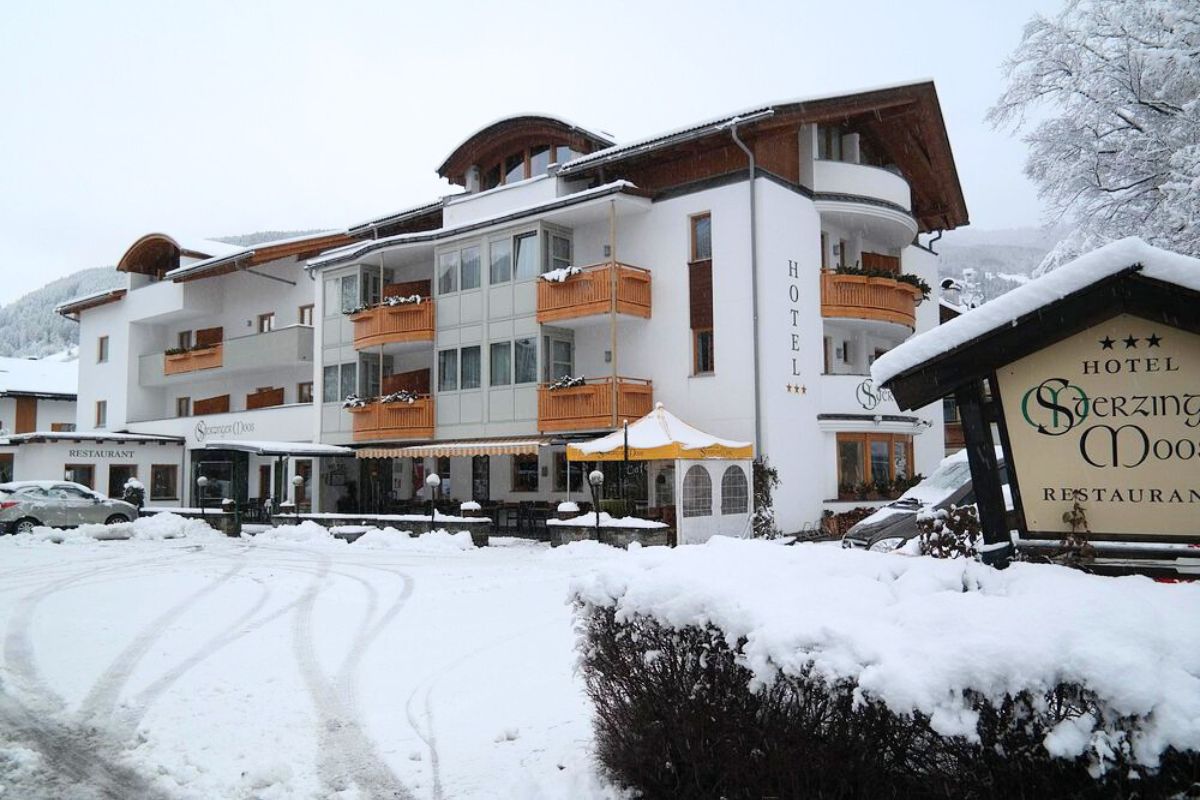
Dining Options
Vipiteno’s culinary scene blends Italian and Austrian influences, creating a unique Alpine dining experience.
Along the colorful main street, Restaurant Goldenes Dachl serves exceptional Tyrolean specialties like spätzle and knödel in a cozy setting with outdoor seating.
For authentic pizza and pasta, I highly recommend Pizzeria Enzian, where local ingredients elevate classic Italian dishes. Their mushroom risotto showcases foraged fungi from surrounding mountains.
Budget-friendly options include Café Zentral, perfect for a quick lunch of panini and espresso while people-watching on the main street.
Don’t miss these local specialties:
- Canederli (bread dumplings)
- Speck (smoked ham)
- Strudel (both savory and sweet varieties)
- Local cheeses with mountain herbs
Many restaurants close between lunch and dinner (2-6 pm), so plan accordingly!
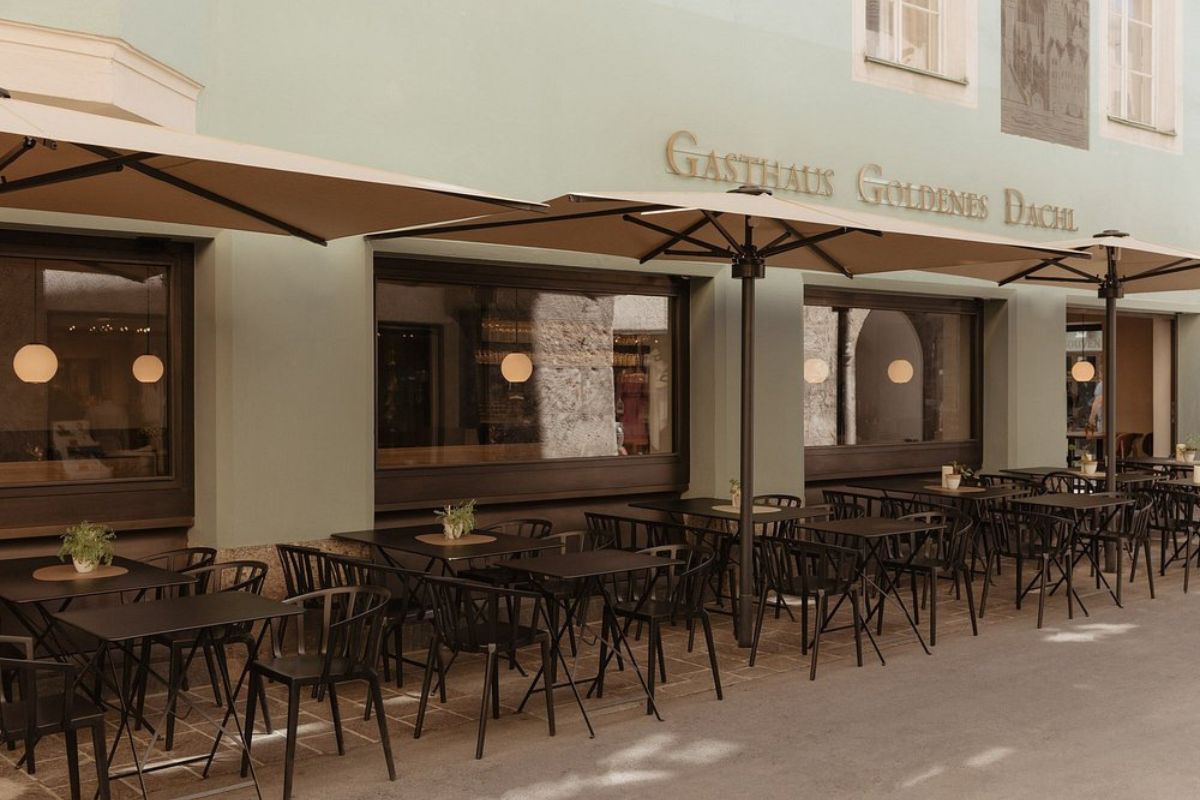
Navigating the Town
I found Vipiteno incredibly walkable. The main attractions are concentrated along Via Città Nuova, the colorful main street.
The town’s compact size means you can explore it thoroughly in a day on foot. For those arriving by car, several parking lots are available outside the historic center.
I recommend the P2 lot near the tourist office. It offers reasonable rates (€8/day) and easy access to the main street.
Public transportation connects Vipiteno with nearby villages and hiking trails. Buses run regularly from the station near the Torre delle Dodici.
The SAD bus #1 takes you to popular trailheads every 30 minutes during the summer months. Rental bikes are available at Sporthaus Nitz near the main square. They’re a great option for exploring the scenic cycling paths along the Isarco River.

